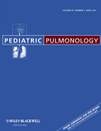Methacholine-induced lung function changes measured with infant body plethysmography†
Conflicts of interest: none of the authors has any competing interests to declare.
Abstract
Several techniques have been applied to measure airway responsiveness (AR) in infants, but there are limited data on lung function changes measured by body plethysmography during induced bronchoconstriction. The aim of this study was to compare changes in maximum forced expiratory flow measured at functional residual capacity (V'maxFRC) by rapid thoracoabdominal compression (RTC) technique with plethysmographic measurements of specific airway conductance (sGaw), and to investigate whether changes in functional residual capacity (FRC) occur during methacholine-induced bronchoconstriction in infants. We examined 94 infants with recurrent airway symptoms using methacholine airway challenge test including RTC and plethysmographic measurements. A significant association between changes in V'maxFRC and sGaw (r = 0.30; P = 0.004) was observed, but after adjustments with baseline variability the changes in V'maxFRC were greater and showed a closer association with changes in oxygen saturation. At the point of maximal airway obstruction, there was a poor agreement between V'maxFRC and sGaw to indicate a significant methacholine-induced bronchoconstriction. Airway challenge was also associated with a significant increase in FRC (P < 0.001), with decreasing V'maxFRC. We conclude that in infants undergoing airway challenge with methacholine, plethysmographic measurements of sGaw correlate with the changes in VmaxFRC, but the agreement is poor and the methods cannot be used interchangeably. VmaxFRC is also more sensitive to detect airway obstruction than sGaw. However, methacholine-induced bronchoconstriction was associated with significant increases in FRC, which may affect the validity of VmaxFRC measurements during the test. Pediatr Pulmonol. 2011; 46:362–368. © 2010 Wiley-Liss, Inc.




